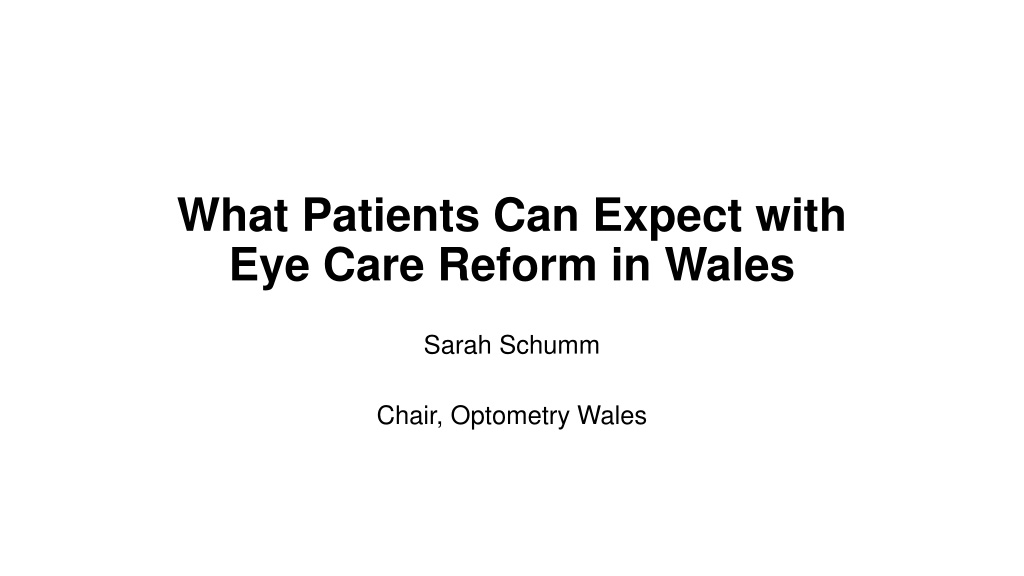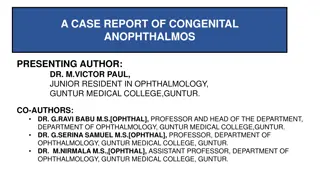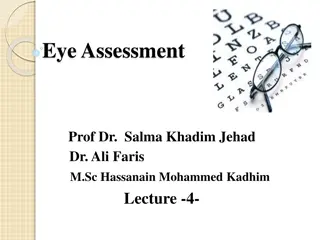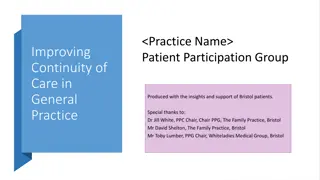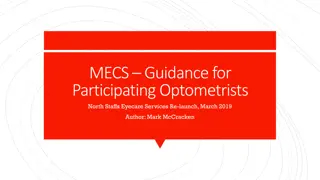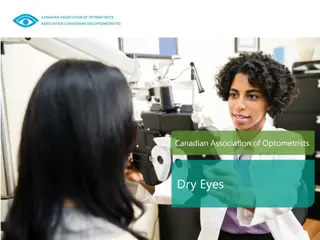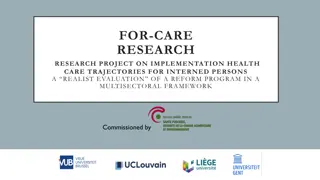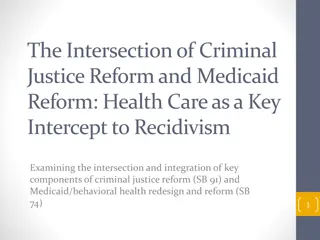Eye Care Reform in Wales: Improving Access and Patient Outcomes
In Wales, changes in eye care services are being introduced to address issues like lengthy waiting times and access to specialist care. With a focus on reducing referrals, improving access to eye care, and preventing unnecessary sight loss, these reforms aim to bring quality care closer to patients. Stakeholders are actively engaging in reshaping the optometry sector, emphasizing the need for sustainability and better integration of clinical services. The transition seeks to elevate primary care optometry's role while ensuring patients receive timely and appropriate care.
Download Presentation

Please find below an Image/Link to download the presentation.
The content on the website is provided AS IS for your information and personal use only. It may not be sold, licensed, or shared on other websites without obtaining consent from the author. Download presentation by click this link. If you encounter any issues during the download, it is possible that the publisher has removed the file from their server.
E N D
Presentation Transcript
What Patients Can Expect with Eye Care Reform in Wales Sarah Schumm Chair, Optometry Wales
Presentation Overview Why is change needed? What are we going to change? When will the changes take effect? What will that mean for patients?
Over 100,000 referrals into secondary eye care 39,450 ophthalmology patients waiting >36 weeks 112,610 patients waiting longer than their clinically agreed review date. ~70% at risk of irreversible sight loss 48.3% of patients(June) classed as R1 seen within their target date against a target of 95% Figures from June 2022
Themes of change: Why is it needed? Options 1. Do Nothing 2. Recruit more ophthalmologists 3. Utilise available skills and resources in primary care optometry
Themes of change: Why is it needed? Previous optometric business model has relied on retail sales to remain viable, rather than clinical examinations Current model puts high demand on specialist eye care services and a need for more access for patients to ophthalmology
General Optical Council research shows public think of optometrists as retail outlets Source: GOC Public Perception Survey 2022 Source: GOC Public Perception Survey 2022
Themes of change: Why is it needed? Scoping meetings began in 2019 engagement with all stakeholders Sustainability of retail based model. Pressures on retail model from online glasses and contact lens sales and automation of the sight test
Aims and Predicted outcomes A reduction in referrals to secondary care of one third 35,000 follow up appointments into primary care Improvement in access to specialist eye care Minimise unnecessary sight loss Care closer to home with greater access for patients available on the high street with close transport links
Summary The first UK nation to move to a fully clinical optometry service with eye care professionals across the entire pathway working at the top of their licence Fully collaborative approach, working with all stakeholders across Wales including the Wales Royal College of Ophthalmologists throughout the process Responsibility now with NHS for implementation. Lots of opportunities for practitioners and practices to embrace the clinical model of care. Significant patient safety improvements, improved access and avoidance of preventable sight loss.
Next Steps- Communication and Engagement Communications Change Management.
Diolch Thank you
